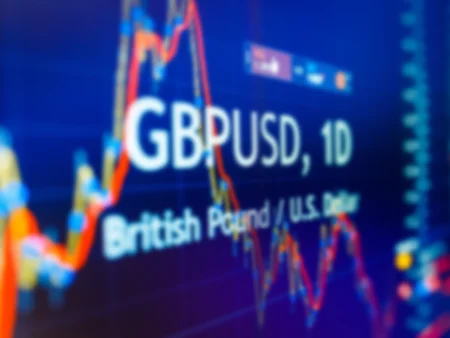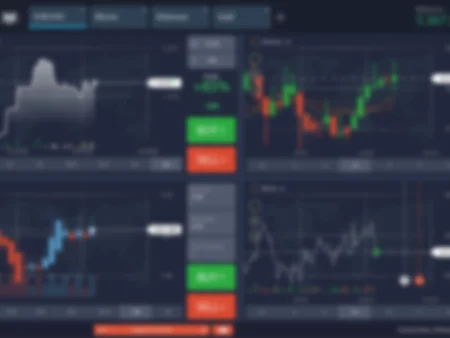What is the Commodities Market and How Do You Trade It?
The commodities market is a global marketplace where traders and investors buy, sell, or speculate on the prices of physical goods or raw materials. These goods, known as commodities, are typically divided into two broad categories: hard commodities and soft commodities. Hard commodities include natural resources like oil, gold, and silver, while soft commodities include agricultural products like wheat, coffee, and sugar. Commodities markets play a crucial role in the global economy by facilitating the trade of these essential goods.
1. Understanding the Commodities Market
Commodities markets operate similarly to other financial markets, such as stock or forex markets, but they involve the trade of physical assets. These markets are essential for producers, manufacturers, and investors:
- Producers (such as farmers or mining companies) use commodities markets to sell their products and hedge against price fluctuations.
- Manufacturers rely on commodities to produce goods and often use futures contracts to lock in prices to reduce uncertainty.
- Investors and speculators participate in these markets to profit from price changes by buying low and selling high or vice versa.
Commodities are generally traded on exchanges like the Chicago Mercantile Exchange (CME), the New York Mercantile Exchange (NYMEX), and the London Metal Exchange (LME).
2. Types of Commodities
There are two main types of commodities:
- Hard Commodities: These are natural resources that must be mined or extracted. Common examples include:
- Crude oil
- Gold
- Silver
- Copper
- Natural gas
- Soft Commodities: These are agricultural products or livestock. Common examples include:
- Coffee
- Sugar
- Wheat
- Cotton
- Corn
- Livestock (like cattle and hogs)
Commodities are further divided into various sectors such as energy, metals, and agriculture. Traders can diversify their portfolios by investing in different commodity sectors based on market trends and economic conditions.
3. How Do You Trade Commodities?
There are several ways to trade commodities, ranging from direct investment in physical goods to speculative trading using financial instruments. Let’s explore the most common methods of trading commodities:
a) Physical Commodity Trading
This is the most direct form of commodity trading, where investors buy and sell the physical commodity itself. For example, a trader might purchase a quantity of gold bars or barrels of crude oil. However, physical commodity trading is rare for most retail traders due to the challenges of storage, transportation, and insurance.
b) Futures Contracts
Futures contracts are the most popular way to trade commodities. A futures contract is an agreement to buy or sell a commodity at a predetermined price on a specified future date. Futures are standardized and traded on exchanges, making them accessible and transparent.
Example of Commodity Futures Trading:
- A wheat farmer might sell wheat futures to lock in a price for their crop, ensuring they don’t suffer from a price drop before harvest.
- Conversely, a bakery might buy wheat futures to ensure they can purchase wheat at a stable price, even if the market price rises.
For investors, futures contracts offer opportunities for speculation, as traders can bet on whether prices will rise or fall. However, because futures are leveraged, traders can control large positions with a small initial investment, which amplifies both profits and potential losses.
c) Options on Futures
Similar to futures contracts, options give traders the right—but not the obligation—to buy or sell a commodity at a specific price on a future date. Options offer more flexibility than futures because you can choose whether or not to exercise the contract depending on market conditions.
- A call option allows the trader to buy the commodity at a predetermined price if they believe the price will rise.
- A put option allows the trader to sell the commodity if they believe the price will fall.
Options are a popular tool for risk management, allowing traders to hedge against unfavorable price movements while still participating in potential gains.
d) Commodity ETFs (Exchange-Traded Funds)
For investors who want exposure to commodities without directly trading futures or options, commodity ETFs are a simpler alternative. ETFs are funds that track the price of a particular commodity or a basket of commodities. For example:
- A gold ETF tracks the price of gold, allowing you to invest in the precious metal without holding physical gold or trading futures.
- An agricultural ETF might track the prices of several agricultural commodities, providing diversified exposure.
Commodity ETFs can be traded like stocks on major exchanges, making them accessible and easy to buy and sell.
e) CFDs (Contracts for Difference)
CFDs allow traders to speculate on commodity price movements without owning the underlying asset. When trading CFDs, you enter a contract with a broker to exchange the difference in the commodity’s price from the time the contract is opened to when it is closed. CFDs are leveraged products, meaning you can take a large position with a small deposit, but they also carry significant risk.
f) Commodity Stocks
Investors can gain indirect exposure to commodities by investing in the stocks of companies involved in commodity production or extraction. For example, buying shares in an oil company like ExxonMobil or a mining company like Barrick Gold provides exposure to oil or gold prices, respectively. However, these stocks also depend on factors beyond commodity prices, such as company performance and broader market conditions.
4. What Affects Commodity Prices?
Commodity prices can be highly volatile, influenced by various factors, including:
- Supply and Demand: Changes in the production or consumption of a commodity can cause significant price fluctuations. For example, a drought may reduce crop yields, driving up prices for agricultural commodities.
- Geopolitical Events: Political instability or conflict in key producing regions can disrupt supply chains, causing price spikes, particularly in energy markets (e.g., oil and gas).
- Economic Data: Economic indicators such as inflation, employment rates, and GDP growth affect commodity prices. For example, stronger economic growth often increases demand for industrial metals like copper and iron ore.
- Currency Fluctuations: Commodities are typically priced in U.S. dollars, so changes in the dollar’s value can impact commodity prices. A weaker dollar generally makes commodities cheaper for foreign buyers, boosting demand.
- Seasonal Factors: Weather conditions can affect agricultural commodities, with harvest periods, droughts, or storms impacting production and pricing.
5. Risks and Benefits of Commodity Trading
Benefits:
- Portfolio Diversification: Commodities provide an alternative to traditional assets like stocks and bonds, helping investors diversify their portfolios.
- Inflation Hedge: Commodities, especially precious metals like gold, are often viewed as a hedge against inflation, as their value tends to rise when inflation increases.
- Profit Potential: The volatility of commodities can offer significant profit opportunities for skilled traders who can predict price movements.
Risks:
- Price Volatility: Commodities are subject to sudden and extreme price swings, making them riskier than other asset classes.
- Leverage Risks: Trading futures and CFDs with leverage amplifies both profits and losses, potentially leading to significant financial losses.
- Geopolitical and Environmental Risks: Commodities are vulnerable to external shocks, such as geopolitical events, natural disasters, and supply disruptions, which can lead to sudden price changes.
6. Conclusion
The commodities market is a dynamic and integral part of the global economy, offering traders and investors numerous opportunities to profit from the price movements of natural resources and agricultural products. Whether you choose to trade futures, options, ETFs, or CFDs, it’s essential to understand the factors that influence commodity prices and the risks associated with each trading method.
Successful commodity trading requires careful analysis, risk management, and a deep understanding of market forces, making it a potentially rewarding, but also risky, investment avenue. For beginners, starting with simpler tools like ETFs or commodity stocks might be the safest way to gain exposure before venturing into more complex instruments like futures or options.












